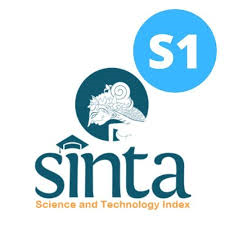THE HYPHOMYCETE GENUS DACTYLARIA SACC.
Abstract
Keywords
Full Text:
PDFReferences
BARNETT, H. L. (1960). Illustrated genera of imperfect fungi. Minneapolis.
BAERON, G. L. (1962). Stachybotrys aurantia sp. nov. from soil. In Can. J. Bot. 40: 257—261.
BARRON, G. L. (1984). A note on the relationship between Stachybotrys and Hyalostachybotrys. In Mycologia 56: 313—315.
BESSEY, E. A. (1950). Morphology and taxonomy of fungi. Philadelphia.
BOEDIJN, K. B. & REITSMA, J. (I960). Notes on the genus Cylindrocladium (Fungi: Mucedinacaas). In Reinwardtia 1: 51—60.
BOSE, S. K. (1961). Studies on Massarina Sacc. and related genera. In Phytopath. Zi.. 41: 151—213.
CLEMENTS, F. E. & SHEAR, C. L. (1931). The genera of fungi. New York.
CoOKE, R. C. (1964). Dactylaria clavispora,, a new nematode-trapping hyphomycete. In Trans. Br. mycol. Soc. 47: 307—309.
COOKE, R. C. & DICKINSON, C. H. (1965). Nematode-trapping species of Dactylella and Monacrosporium,. In Trans. Br. mycol. Soc. 48: 621-—629.
CoOKE, R. C. & GODFREY, B. E. S. (1964). A key to the nematode-destroying fungi. In Trans. Br. mycol. Soc. 47: 61—74.
COOKE, R. C. & SATCHUTHANANTHAVALE, V (1966). Some nematode-trapping species' of Dactylaria. In Trans Br. mycol. Soc. 49: 27—31.
DENNIS, R. W. G. (1960). British cup-fungi and their allies. London.
DEWNIS, R. W. G. (1964). Remarks on the genus Hyttienoscyphus S. F. Gray, with observations on sundry species referred by Saccardo and others to the genera Helotium, Pezizella or Phialea. In Persoonia 3: 29—80.
DOLLFUS, R. P. (1964). Parasites (animaux et vegetaux) des Helminthes. In Encycl. biol. 27: 1—481.
DRECHSLER, C. (1937). Some hyphomycetes that prey on free-living terricolous nematodes. In Mycologia 29: 447—552.
DRECHSLER, C. (1940). Three new hyphomycetes preying on free-living terricolous nematodes. In Mycologia 32: 448—470.
DRECHSLER, C. (1944). Three hyphomycetes that capture nematodes in adhesive network. In Mycologia 36: 138—171.
DRECHSLER, C. (1950). Several species of Dactylella and Dactylaria that capture freeliving nematodes. In Mycologia 42: 1—79.
DRECHSLER, C. (1954). Some hyphomycetes that capture eelworms in southern states. In Mycologia 46: 762—782.
ELLIS, M. B. (1959). Clasterosporium and some allied Dematiaceae—Phragmosporae. II. In Mycol. Pap. 72: 1—75.
ELLIS, M. B. (1960). Dematiaceous Hyphomycetes. I. In Mycol. Pap. 76: 1—36.
HERING, T. F. (1965). Succession of fungi in the litter of Lake District Oakwood. In Trans. Br. mycol. So. 48: 391—408.
HERING, T. F. (1965a). British Records: 89. Dactylaria purpurella (Sacc.) Sacc. In Trans. Br. mycol. Soc. 48: 666—667.
HUGHES, S. J. (1951). Studies on micro-fungi. XIII. Beltrania, Cerutocladium, Diplorhinotrichum and Hansfordiella (gen. nov.). In Mycol. Pap. 47: 1—15.
HUGHES, S. J. (1958). Revisiones Hyphomycetum aliquot cum appendice de nominibus rejiciendis. In Can. J. Bot. 36: 727—836.
MACGARVIE, Q. D. (1965). Diplorhinotrichum juncioola sp. nov., causing a disease of Juncus effusu8. In Trans. Br. mycol. Soc. 48: 269—271.
MADELIN, M. F. (1966). Triehothecium acridiorwm (Trabut) comb. nov. on red locusts. In Trans. Br. mycol. Soc. 49: 275—288.
MULLER, E. & VON ARX, J. A. (1962). Die Gattungen der didymosporen Pyrenomyceten. In Beitr. Kryptogamenfl. Schweiz II, 2: 1—922.
PAPENDORF, M. C. (1967). Two new genera of soil fungi from South Africa. In Trans. Br. mycol. Soc. 50: 69—75.
RIFAI, M. A. (1964). Stachybotrys bambusicola sp. nov. In Trans. Br. mycol. Soc. 47: 269—272.
RIFAI, M. A. & COOKE, R. C. (1966). Studies on some didymosporous genera of nematode-trapping Hyphomycetes. In Trans. Br. mycol. Soc. 49: 147—168.
ROY, R. Y. & GUJARATI, S. (1965). A new species of Dactylaria from soil. In Lloydia 28: 53—54.
SACCARDO, P. A. (1877). Fungi italici autographice deliniati. Fasc. I—IV. Patavii.
SACCARDO, P. A. (1877a). Fungi italici autographice deliniati. Commentarium. In Michelia 1: 73—100.
SACCARDO, P. A. (1880). Conspectus generum fungorum italiae inferiorum. In Michelia 2: 1—38.
SACCARDO, P. A. (1886). Sylloge Fungorum 4. Patavii.
SOPRUNOV, F. F. (1958). [Predaceous fungi — Hyphomycetes and their application in the control of pathogenic nematodes. Ashkabad. — In Russian].
SUBRAMANIAN, C. V. (1963). Dactylella, Monacrosporium and Dactylina. In J. Indian bot. Soc. 42: 291—300.
SUTTON, B. C. & PIROZYNSKI, K. A. (1965). Notes on microfungi. II. In Trans. Br. mycol. Soc. 48: 349—366.
TUBAKI, K. (1954). Studies on the Japanese Hyphomycetes. I. Coprophilous group. In Nagaoa 4: 1—20.
Refbacks
- There are currently no refbacks.









